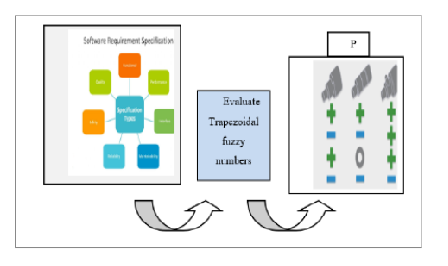


Indian Journal of Science and Technology
DOI: 10.17485/IJST/v15i12.1757
Year: 2022, Volume: 15, Issue: 12, Pages: 542-553
Original Article
Raghavendra Devadas1,2*, Nagaraj G Cholli3
1Research Scholar, RV College of Engineering, Visveswaraya Technological University, Belgaum
2Assistant Professor, Department of CSE, Presidency University, Bangalore
3Associate Professor. Department of ISE, RV College of Engineering, Bangalore
*Corresponding Author
Email: [email protected]
Received Date:21 September 2021, Accepted Date:18 February 2022, Published Date:25 March 2022
Objective: To prioritize requirements for large scale software projects within time involving uncertainty in the opinions among different stakeholders. Methods: We propose Pugh Trapezoidal Fuzzy and Gradient Reinforce Learning (PTF-GRL) methods for large scale software requirement prioritization. A Pugh Decision-based Trapezoidal Fuzzy Requirement Selection model is designed, inputting the functional and non-functional requirements of the corresponding stakeholders. With the assistance of Trapezoidal Fuzzy Inference, the qualitative factors are mapped with the corresponding numeric factors, which increases the computational efficiency. Findings: Performance is analyzed based on four parameters: The first parameter is accuracy and our method showed improvement of 4%, 7% and 3% compared to JRD-SCRUM, IFS and SRPTackle respectively. The second parameter is prioritization time and found that our method had reduced time of 30%, 37% and 39% compared with existing methods. The third parameter is precision and it was found that our method improves precision by 6%, 10% and 5% compared with the other two methods. The final parameter we consider is the test suite execution and our method showed improvement of 12%, 19% and 5% compared with the existing two methods. Novelty/Applications: The originality of this work indicates the better performance along with the optimal test suite execution even considering the uncertainty factor in the proposed method compared with existing similar methods.
Keywords: Software Project; Pugh Decision Matrix; Trapezoidal Fuzzy Inference; Gradient Orientation; Reinforce Learning; Requirement Prioritization
© 2022 Devadas & Cholli. This is an open-access article distributed under the terms of the Creative Commons Attribution License, which permits unrestricted use, distribution, and reproduction in any medium, provided the original author and source are credited.
Published By Indian Society for Education and Environment (iSee)
Subscribe now for latest articles and news.